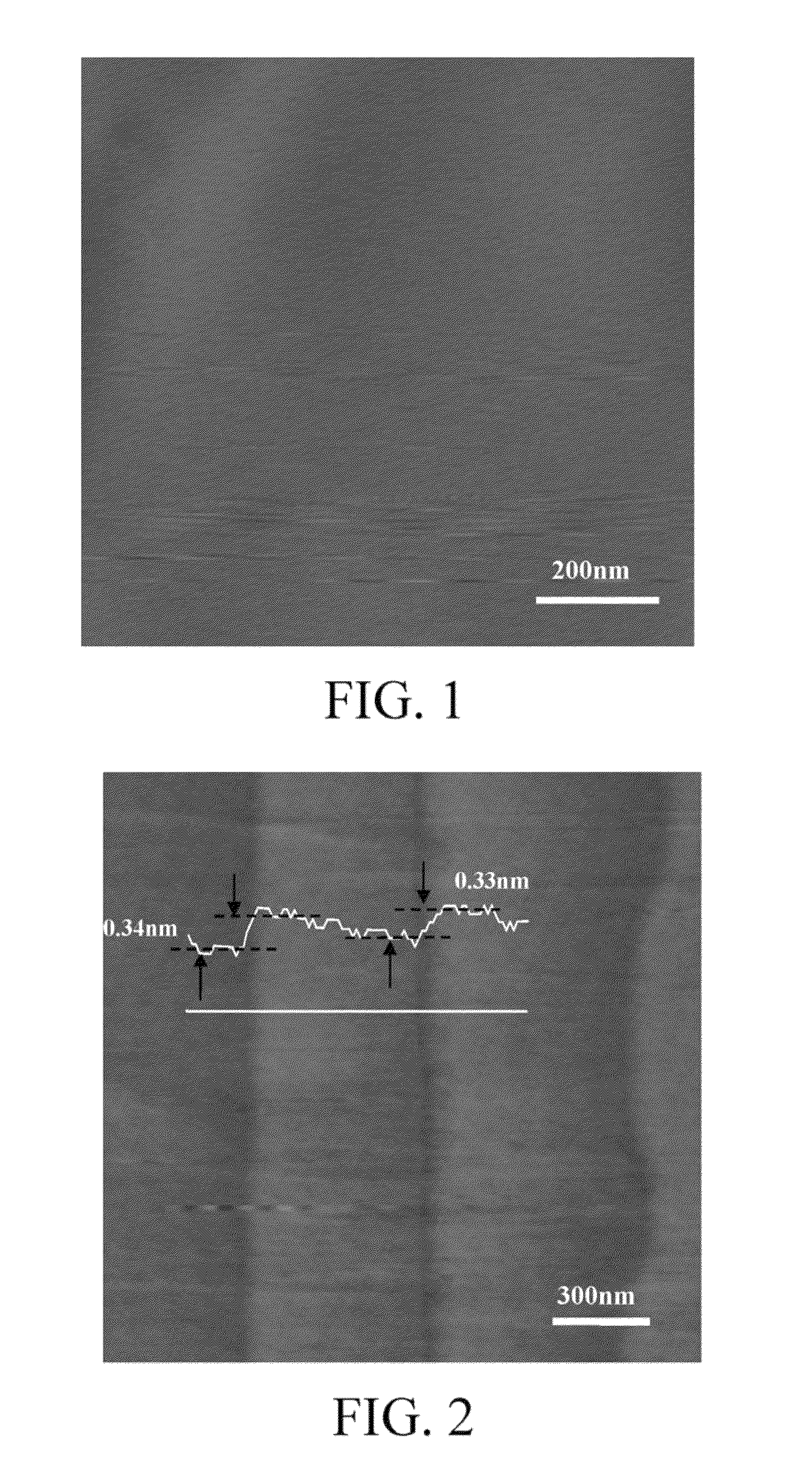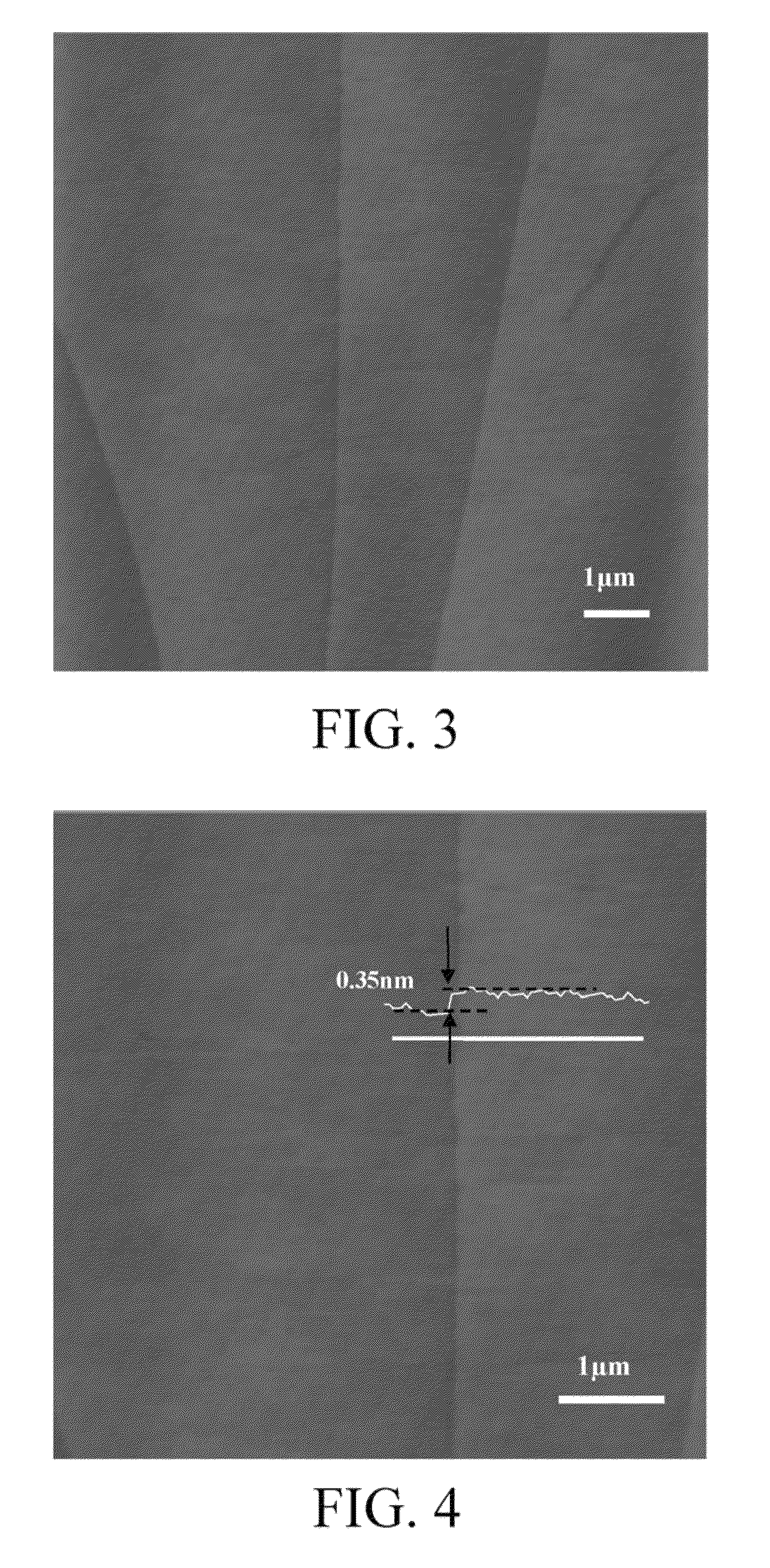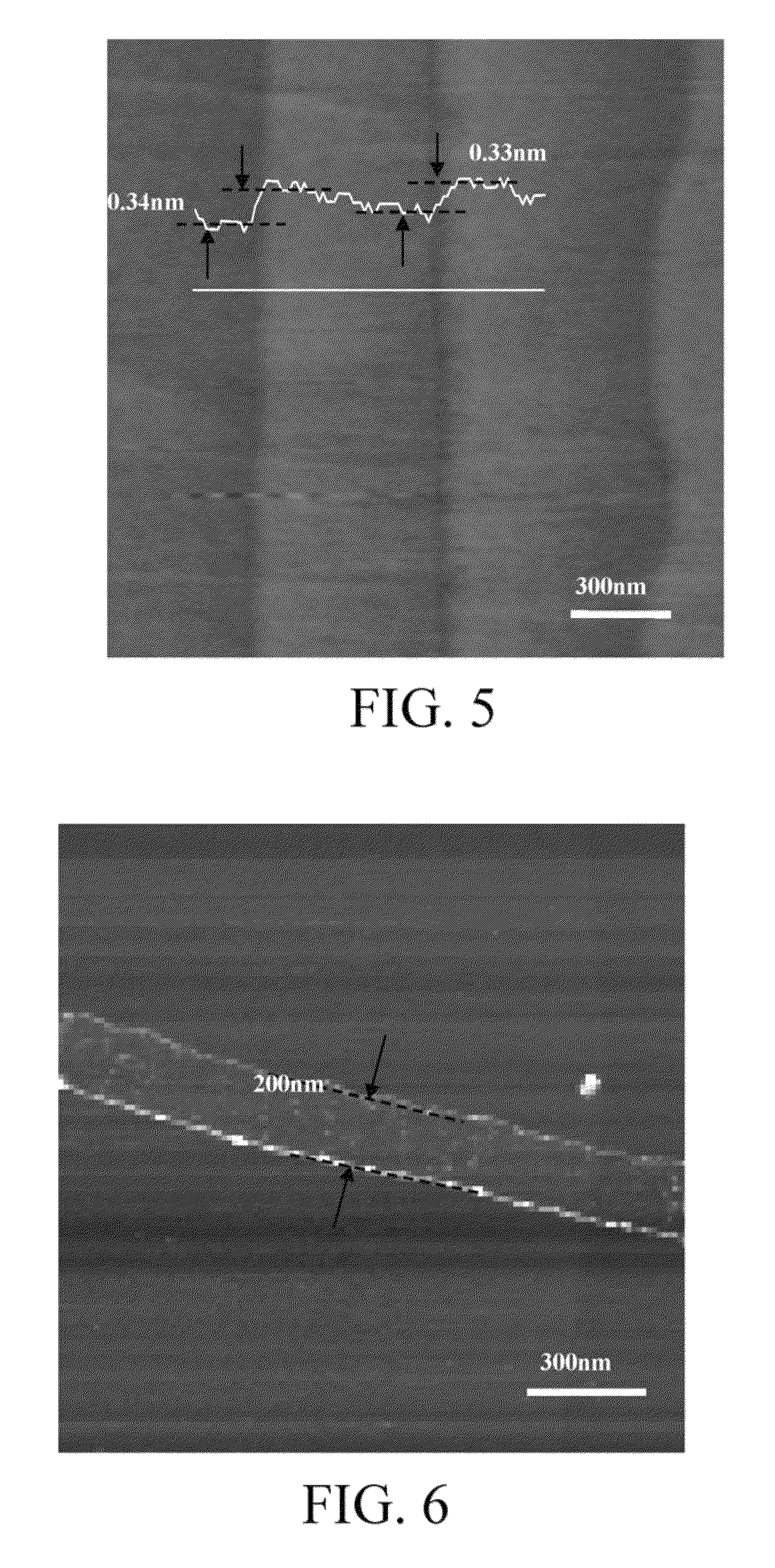Method for preparing graphene nanoribbon on insulating substrate
a graphene nanoribbon and substrate technology, applied in the direction of graphene nanoribbons, solid-state diffusion coatings, transportation and packaging, etc., can solve the problems of reducing the electron mobility of graphene, high temperature required for sic pyrolysis, and high cost of sic substrates
- Summary
- Abstract
- Description
- Claims
- Application Information
AI Technical Summary
Benefits of technology
Problems solved by technology
Method used
Image
Examples
embodiment 1
Preparation of an hBN Substrate Having Single Atomic Layer Steps
[0046]Step 1: Use a monocrystal hBN flake as a raw material, and mechanically strip the monocrystal hBN flake on a SiO2 / Si substrate to obtain an hBN sheet having a fresh cleavage plane, and as shown in FIG. 1, a surface thereof is highly flat without any step.
[0047]Step 2: Put an hBN / SiO2 substrate obtained in Step 1 into a tube furnace, feed therein 300 sccm of a mixture of hydrogen gas and argon gas (a volume ratio thereof is H2:Ar=1:3), heat the temperature up to 1,200° C. at a rate of 20° C. / min, maintain the temperature unchanged for 10 min, and allow to cool down with the tube furnace. In this way, steps having the height of a single atomic layer as shown in FIG. 2 are obtained. As is shown by a height analysis, height differences of the steps are 0.34 nm and 0.33 nm, the steps are steps of a single BN atomic layer, and a spacing between the steps is about 500 nm.
embodiment 2
Preparation of an hBN Substrate Having Single Atomic Layer Steps
[0048]Step 1: Use a monocrystal hBN bulk as a substrate, and remove a surface layer of hBN by using a mechanical stripping method.
[0049]Step 2: Put the substrate into a tube furnace, feed therein 300 sccm of a mixture of hydrogen gas and argon gas (a volume ratio thereof is H2:Ar=1:6), heat the temperature up to 1,100° C. at a rate of 20° C. / min, maintain the temperature unchanged for 50 min, and allow to cool down with the tube furnace. In this way, as shown in FIG. 3, steps having the height of a single atomic layer are obtained. A spacing between the steps is from 1 to 5 μm.
embodiment 3
Preparation of an hBN Substrate Having Single Atomic Layer Steps
[0050]Step 1: Use hBN grown by a CVD method as a substrate, and remove a surface layer of hBN by using a mechanical stripping method. A process of preparing hBN by a CVD method includes: using borazine as a BN source, using argon gas as a carrier gas, using metal Ni as a substrate at 1,000° C., allowing the grow at a pressure of 5 Pa for half an hour to obtain an hBN film, and transferring the hBN film onto a SiO2 / Si substrate.
[0051]Step 2: Put the substrate into a tube furnace, feed therein 300 sccm of a mixture of hydrogen gas and argon gas (a volume ratio thereof is H2:Ar=1:9), heat the temperature up to 1,000° C. at a rate of 20° C. / min, maintain the temperature unchanged for 300 min, and finally allow to cool down with the tube furnace. In this way, as shown in FIG. 4, steps having the height of a single atomic layer are obtained. A height analysis result of the steps is 0.35 nm, the steps are single BN atomic step...
PUM
| Property | Measurement | Unit |
|---|---|---|
| width | aaaaa | aaaaa |
| width | aaaaa | aaaaa |
| width | aaaaa | aaaaa |
Abstract
Description
Claims
Application Information
 Login to view more
Login to view more - R&D Engineer
- R&D Manager
- IP Professional
- Industry Leading Data Capabilities
- Powerful AI technology
- Patent DNA Extraction
Browse by: Latest US Patents, China's latest patents, Technical Efficacy Thesaurus, Application Domain, Technology Topic.
© 2024 PatSnap. All rights reserved.Legal|Privacy policy|Modern Slavery Act Transparency Statement|Sitemap



